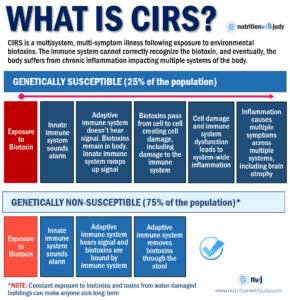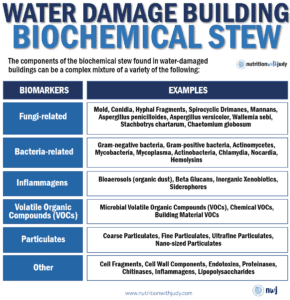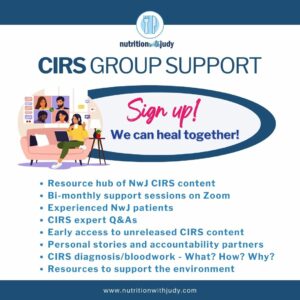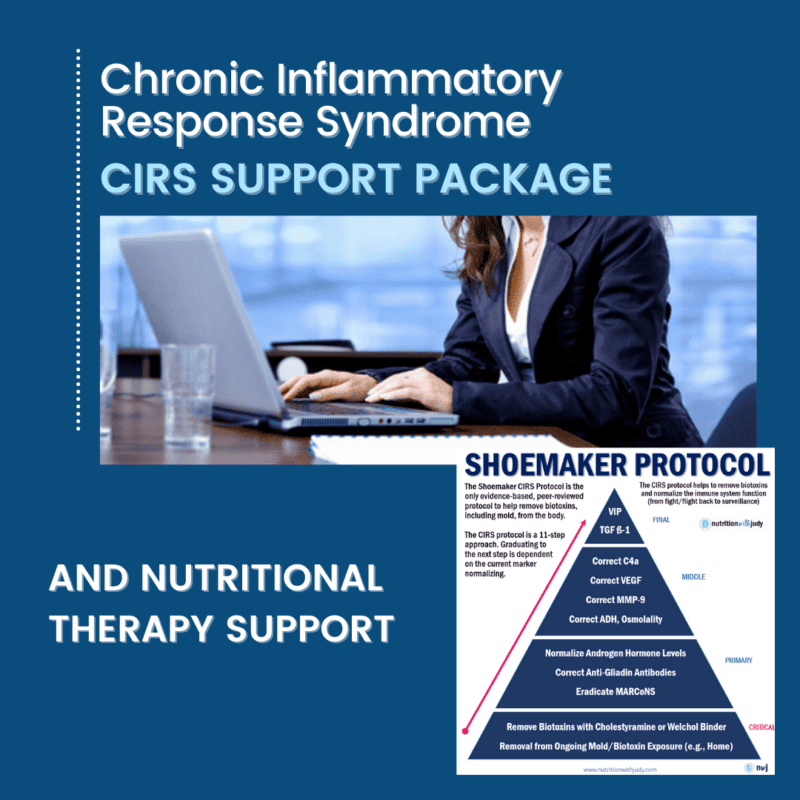

CIRS and NeuroQuant


Chronic Inflammatory Response Syndrome (CIRS) is a complex condition that affects multiple systems in the body, often making diagnosis and treatment challenging. One of the advanced tools used to gain deeper insights into the condition is NeuroQuant, a cutting-edge brain imaging technique that provides detailed information about brain structure and function.
While NeuroQuant is not used for diagnosing CIRS, it can play a crucial role in understanding the condition by offering precise measurements of brain structures, which can help identify abnormalities associated with CIRS. By providing objective data on brain volume and structure, NeuroQuant aids healthcare providers in developing more targeted and effective treatment plans. However, like any diagnostic tool, NeuroQuant has its benefits and drawbacks, which will be explored in this article.
Understanding the nuance behind NeuroQuant’s use within the Shoemaker Protocol is essential for both patients and practitioners. Let’s take a closer look at how NeuroQuant can be a powerful asset in treating CIRS, while also addressing its limitations and the importance of integrating it with other diagnostic methods.
What Is CIRS?
Chronic Inflammatory Response Syndrome (CIRS) is a complex disorder with a wide array of symptoms impacting various bodily systems. This syndrome stems from significant inflammation caused by an overactive immune response. Recognized as a legitimate medical condition, diagnosing CIRS necessitates comprehensive lab tests and a detailed review of the patient’s medical history.
Due to the diverse symptoms of CIRS, it is often misdiagnosed or improperly treated. Unlike other immune disorders characterized by abnormal adaptive immune responses, CIRS cannot be identified through standard autoimmune blood tests. This necessitates a more thorough and specialized approach to accurately diagnose and manage the condition.


What causes the heightened immune response and widespread inflammation associated with CIRS? The culprit is biotoxins—biologically derived toxic substances. These biotoxins, which can initiate and worsen CIRS, originate from various sources, including:
- Water-Damaged Environments: Approximately 80% of CIRS cases are linked to exposure to air in water-damaged settings. These environments contain mold mycotoxins, bacteria, and other chemical irritants, which can trigger inflammatory reactions in susceptible individuals. Both living and non-living mold components significantly contribute to inflammation in the body and brain.
- Insect Bites: Certain insect bites, such as those from ticks and spiders, can lead to long-term conditions such as chronic Lyme disease. Pathogens such as Borrelia burgdorferi and Babesia microti are commonly involved, and venom from recluse spider bites can cause prolonged health issues.
- Seafood Consumption: Consuming tropical reef fish contaminated with ciguatera toxin, often linked to Pfiesteria and harmful algae blooms such as cyanobacteria (blue-green algae), can cause biotoxin-related illnesses. This toxin accumulates in larger reef fish that consume smaller fish, which have ingested dinoflagellates.
- Contact with Contaminated Water: Exposure to or inhalation of water contaminated with toxic algae blooms, including Pfiesteria and cyanobacteria, can also trigger the inflammatory responses characteristic of CIRS.
- Other Biotoxin Sources: Additional triggers for CIRS include exposure to certain vaccines, viruses, volatile organic compounds (VOCs), endotoxins, and actinomycetes. These elements can all contribute to the development of the syndrome.


Biotoxins are tiny molecules that can penetrate cell membranes, making them difficult to detect with standard blood tests. These toxins typically enter the body through inhalation but can also be introduced via ingestion, tick and spider bites, and direct contact with contaminated water.
Not everyone exposed to common biotoxins, such as mold, will develop Chronic Inflammatory Response Syndrome (CIRS). Genetic factors and life stressors play a crucial role in determining susceptibility to biotoxin-related conditions. Events such as severe illnesses, surgeries, high fevers, pregnancies, significant biotoxin exposure, and other traumatic incidents can induce a cytokine storm. This may activate the CIRS gene in genetically susceptible individuals, particularly those with HLA-DR genes, indicating that CIRS can manifest at any stage of life. It’s important to understand that a lack of symptoms does not equate to immunity, and genetic testing can offer valuable insights for prevention.
While biotoxins might cause immediate illness, most people’s immune systems can identify and eliminate these toxins effectively. However, individuals genetically predisposed to CIRS have immune systems that fail to recognize and clear these toxins, allowing them to persist in the body. This results in a chronic, severe immune reaction and extensive inflammation, leading to a variety of symptoms and long-term health issues.
For a more detailed understanding of CIRS, click here.
Pro-Tip: If you think you’re suffering from CIRS, start with our White Glove Service for comprehensive care.
What Is NeuroQuant?


NeuroQuant (NQ) is an advanced brain imaging software developed by CorTechs Labs, designed to provide precise volumetric measurements of different brain regions. In 2017, NeuroQuant received 510(k) clearance from the FDA, marking it as a recognized medical device. This groundbreaking technology offers a tagline, “Atrophy, quantified,” highlighting its capability to measure and quantify brain atrophy.
Initially developed to aid in the early diagnosis of Alzheimer’s and Parkinson’s diseases by focusing on the substantial nigra and basal ganglia, NeuroQuant has since expanded its utility. The software works in tandem with magnetic resonance imaging (MRI) or computerized tomography (CT) scans to identify areas of potential neurodegeneration. By comparing localized brain atrophy to a large database of normal controls, NeuroQuant uses a sophisticated mathematical model to provide accurate assessments.
NeuroQuant allows healthcare practitioners to diagnose and monitor various neurological conditions, including Alzheimer’s disease (AD), epilepsy, multiple sclerosis (MS), amyotrophic lateral sclerosis (ALS), autism spectrum disorder, and traumatic brain injuries. In less than ten minutes, the software delivers volume calculations of several brain structures, measuring how a patient’s brain compares to a database adjusted for age, sex, and intracranial volume (brain size). This rapid and precise analysis aids in early detection, accurate diagnosis, and effective management of neurological disorders, offering significant benefits to both patients and practitioners.
How Are NeuroQuants Used for CIRS Treatment?
NeuroQuant can play an important role in the treatment and management of CIRS by providing detailed insights into structural brain changes linked to chronic biotoxin exposure. One of the critical areas NeuroQuant focuses on is the hippocampus, a region essential for memory and learning, which is particularly vulnerable to damage from neurodegenerative diseases. Detecting any volumetric changes in the hippocampus early can help identify neurodegenerative diseases before they progress significantly.
In the context of CIRS, chronic exposure to biotoxins has been linked to structural changes in the brain. Patients suffering from CIRS may exhibit brain atrophy, swelling, or volumetric shifts in specific brain structures. A NeuroQuant study analyzing brain images of CIRS patients revealed decreased tissue volume in the caudate nucleus and increased volumes in the forebrain parenchymal and cortical gray matter. These findings highlight the impact of biotoxin exposure on brain structure, which can be critical for early diagnosis and intervention.
NeuroQuant evaluates 11 different brain regions for volumetric changes in CIRS patients, identifying patterns of atrophy and edema. CIRS-related brain impairments include difficulties with concentration, confusion, disorientation, trouble assimilating new words, and poor short-term memory.
By providing detailed volumetric measurements, NeuroQuant helps clinicians better understand the neurological impact of CIRS, facilitating more targeted and effective treatment strategies for managing these cognitive symptoms.
What Are the Benefits of NeuroQuant in CIRS Treatment?
The integration of NeuroQuant in the treatment of CIRS offers substantial benefits by providing precise and detailed insights into brain structural changes caused by chronic biotoxin exposure. One of the key advantages of using NeuroQuant in CIRS treatment is its ability to assist practitioners in making informed decisions about supportive therapies.
For instance, NeuroQuant’s volumetric measurements can indicate whether a patient might benefit from Synapsin Spray, a treatment aimed at enhancing cognitive function and supporting neuronal health. However, many practitioners may prescribe Synapsin Spray based on patient symptomatology and a NeuroQuant isn’t required for this prescription. By pinpointing specific areas of atrophy or swelling, practitioners can tailor supportive therapies to address the unique needs of each patient.
However, the main value of NeuroQuant in CIRS treatment lies in its capacity to inform the duration and effectiveness of Vasoactive Intestinal Peptide (VIP) intranasal spray therapy. VIP is used to reverse brain atrophy and restore proper function to affected areas. NeuroQuant’s detailed brain imaging allows for the monitoring of structural changes over time, providing critical feedback on how well the VIP therapy is working. This continuous assessment helps determine the optimal course length for VIP treatment, ensuring that the therapy is administered for the necessary duration to achieve significant improvements in brain structure and function.
What Are the Limitations of NeuroQuant in CIRS Treatment?
While NeuroQuant can offer more data and benefits in the treatment of CIRS, it also comes with several drawbacks and limitations. One primary challenge is the complexity of the data generated by NeuroQuant. The volumetric measurements and brain imaging results require advanced interpretation, and there is often inadequate correction for comorbid factors that can influence these data. Conditions such as chronic pain, drug abuse, and the use of psychiatric medications can all alter brain structures, potentially confounding the results and making it difficult to isolate the effects of CIRS-specific biotoxin exposure.
Another significant limitation is the difficulty in properly excluding other potential causes of brain changes, such as tick-borne illnesses and the emerging issue of long COVID. These conditions can cause brain atrophy and swelling similar to that seen in CIRS, complicating the interpretation of NeuroQuant data.
Initially, all biotoxin-related issues were broadly referred to as mold exposure in terms of NeuroQuant interpretation. However, it is now understood that CIRS brain structural changes can be triggered by a variety of biotoxins, including those from mold, actinomycetes, endotoxins, and more. NeuroQuant data, unfortunately, cannot differentiate the specific cause of the observed brain changes, whether it is from mold, other biotoxins, or even other unrelated conditions.
The inability of NeuroQuant to pinpoint the exact cause of brain swelling or atrophy means that the results must be interpreted alongside the patient’s history and other data available. While NeuroQuant provides valuable insights into structural brain changes, it does not offer a definitive diagnosis or pinpoint the specific biotoxin responsible. This limitation necessitates a comprehensive approach that includes other diagnostic tools and clinical evaluations to form a complete understanding of the patient’s condition.
Consequently, while NeuroQuant is a powerful tool in the arsenal against CIRS, its data should be used as part of a broader diagnostic and treatment strategy, considering the various factors that might influence the results.
How Do I Order My CIRS NeuroQuant?
CIRS practitioners or neurologists are required to order a NeuroQuant. Patients will need to go to an MRI center that has licensed NeuroQuant software. You may be able to get insurance coverage with certain CPT codes (you can join our CIRS Support Group for these specific codes).
Pro-Tip: Never look at one data set alone. Compare your NeuroQuant with bloodwork, symptoms, VCS test, MARCoNS, and GENIE. We’ve had many CIRS patients and clients heal without getting NeuroQuant and generally recommend this piece of testing if it’s covered by insurance.
How Do I Interpret My NeuroQuant Results?
NeuroQuant in CIRS analysis uses volumetric measurements to compare brain structures against a normative database adjusted for age, sex, and intracranial volume. The scoring identifies deviations in brain volume, highlighting areas of atrophy or swelling. These scores help practitioners assess the extent of brain changes associated with CIRS.
For in-depth explanations on how to interpret your NeuroQuant results and scoring, you can find the remainder of this content in our CIRS Support Group.
Closing Thoughts On NeuroQuant and CIRS
NeuroQuant is a valuable tool in the treatment of CIRS, offering detailed insights into brain structure changes due to chronic biotoxin exposure. By providing precise volumetric measurements, NeuroQuant helps identify areas of brain atrophy or swelling, which can guide practitioners in tailoring personalized treatment plans. This is particularly beneficial in deciding on supportive therapies and determining the optimal duration of VIP intranasal spray therapy to reverse brain damage.
However, it is essential to recognize the limitations of NQ testing. The data can be complex and often lacks adequate correction for comorbid factors such as chronic pain, drug abuse, and psychiatric medications. Additionally, NeuroQuant cannot differentiate between specific causes of brain changes, whether from mold, actinomycetes, endotoxins, or other biotoxins. The presence of other conditions, such as tick-borne illnesses and long COVID, further complicates the interpretation of NQ results.
Given these limitations and the potential costs involved, we generally recommend pursuing NeuroQuant testing only if insurance covers the expense. While NeuroQuant can provide an important piece of data for personalizing CIRS treatment, it should be used as part of a comprehensive diagnostic approach. Working closely with a knowledgeable CIRS practitioner ensures that the insights gained from NeuroQuant are effectively integrated into a holistic treatment plan.


Pro-Tip: Are you looking for practitioner resources and a like-minded community to support you through your CIRS journey? Join our exclusive CIRS Support Group for the latest research, step-by-step protocol tools, and support to successfully achieve root-cause healing.
Work With Our Trusted CIRS Practitioners
The Nutrition with Judy practice is honored to be trusted CIRS practitioners having served hundreds of clients and patients from around the globe. We’re passionate about helping our clients achieve root-cause healing in order to lead the best quality of life possible that’s nearly symptom-free. Our team is dedicated to helping CIRS patients navigate this complex illness. If you’re interested in working one-on-one with our CIRS nutritional therapy team to support you through your journey, our CIRS Support Package delivers the support and accountability for achieving root-cause healing.
Start your root-cause healing journey today and contact us any time with any questions or concerns.
DISCLAIMER: This content is for educational purposes only. While we are board-certified in holistic nutrition and are nutritional therapy practitioners, we are not providing medical advice. Whenever you start a new diet or protocol, always consult with your trusted practitioner first.




